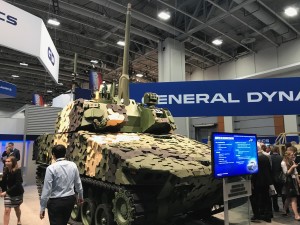
The Army will award a production contract for its Optionally Manned Fighting Vehicle program in the third quarter of fiscal year 2023, with the competition to remain open for vendors that do not participate in the upcoming prototype phase headed for a downselect decision next March. Officials from the Army’s Next-Generation Combat Vehicle Cross Functional Team (CFT) told reporters on Tuesday the team is encouraging industry to continue making investments in advanced technologies, including emerging autonomy tools, for the program…

 By
By 











